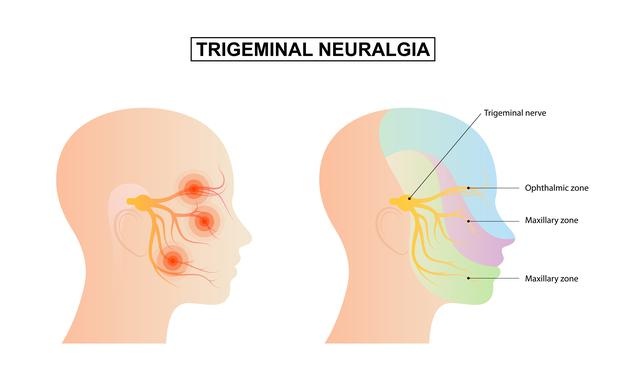Trigeminal Neuralgia

Trigeminal neuralgia (TN), also known as tic douloureux, is sometimes described as the most excruciating pain known to humanity. The pain typically involves the lower face and jaw, although sometimes it affects the area around the nose and above the eye. This intense, stabbing, electric shock-like pain is caused by irritation of the trigeminal nerve, which sends branches to the forehead, cheek and lower jaw. It usually is limited to one side of the face. The pain can be triggered by an action as routine and minor as brushing your teeth, eating or the wind. Attacks may begin mild and short, but if left untreated, trigeminal neuralgia can progressively worsen. Although trigeminal neuralgia cannot always be cured, there are treatments available to alleviate the debilitating pain. Normally, anticonvulsive medications are the first treatment choice. Surgery can be an effective option for those who become unresponsive to medications or for those who suffer serious side effects from the medications.
The trigeminal nerve is one set of the cranial nerves in the head. It is the nerve responsible for providing sensation to the face. One trigeminal nerve runs to the right side of the head, while the other runs to the left. Each of these nerves has three distinct branches. “Trigeminal” derives from the Latin word “tria,” which means three, and “geminus,” which means twin. After the trigeminal nerve leaves the brain and travels inside the skull, it divides into three smaller branches, controlling sensations throughout the face:
- Ophthalmic Nerve (V1): The first branch controls sensation in a person’s eye, upper eyelid and forehead.
- Maxillary Nerve (V2): The second branch controls sensation in the lower eyelid, cheek, nostril, upper lip and upper gum.
- Mandibular Nerve (V3): The third branch controls sensations in the jaw, lower lip, lower gum and some of the muscles used for chewing.
